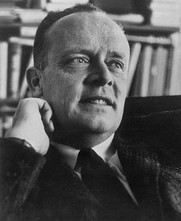What do you think?
Rate this book


400 pages, Paperback
First published June 1, 1961

Through the shadows one can see the tottering of drunks, the faded streetwalker, the few sharp-eyed hoodlums. And then the priest appeared: an erect man with a steady stride. He was obviously a familiar & impressive neighborhood figure who was recognized at once, the recognition producing a chain reaction of edifying behavior.There are many wonderful descriptions of Fr. Kennedy at old St. Paul's, dealing with his exceedingly optimistic junior cleric, with an unreliable handyman with a considerable imagination and with the small collection of Spanish, Italian, Portuguese, Syrian & Chinese worshipers who remain in the parish, an "always shifting balance" of recent immigrants & those too old or too indigent to move.
The drunks managed to straighten themselves up & tug respectfully at their hats; the streetwalker suddenly ashamed, turned away, pointedly fingering the medal at her throat; the hoodlums vanished; the cop on the beat relaxed for the first time & hummed a few bars of "The Minstrel Boy".
The "padre" was passing by & the district was the more wholesome for his presence. As for the "padre" himself, he continued to walk forward as strongly as ever, something about him managing to suggest that he was in a dream--a muscular dream. His smile was compassionate but powerful: one had the feeling that here was a mystic from some ecclesiastical gymnasium, a combination of Tarzan and St. John of the Cross. A saint, but all man...
Which, as I say, is a foolish way to feel: obviously no one ever grows closer to the cradle. But getting old is a strange business. It's happening to you every minute of every day, and you almost never give it a thought; then, one day, you catch a glimpse of an old friend, or you hear a phrase from an old song, or your eye falls on a solitary sentence in the daily paper, and suddenly, without being able to do a thing in the world about it, you seem to be for a moment outside your own skin, taking one good long look at yourself, exactly as you stand, exactly as you are. And at this point, no matter who you are, or what you believe, or what you may be, it sometimes becomes a little hard to give three cheers for the inevitable....